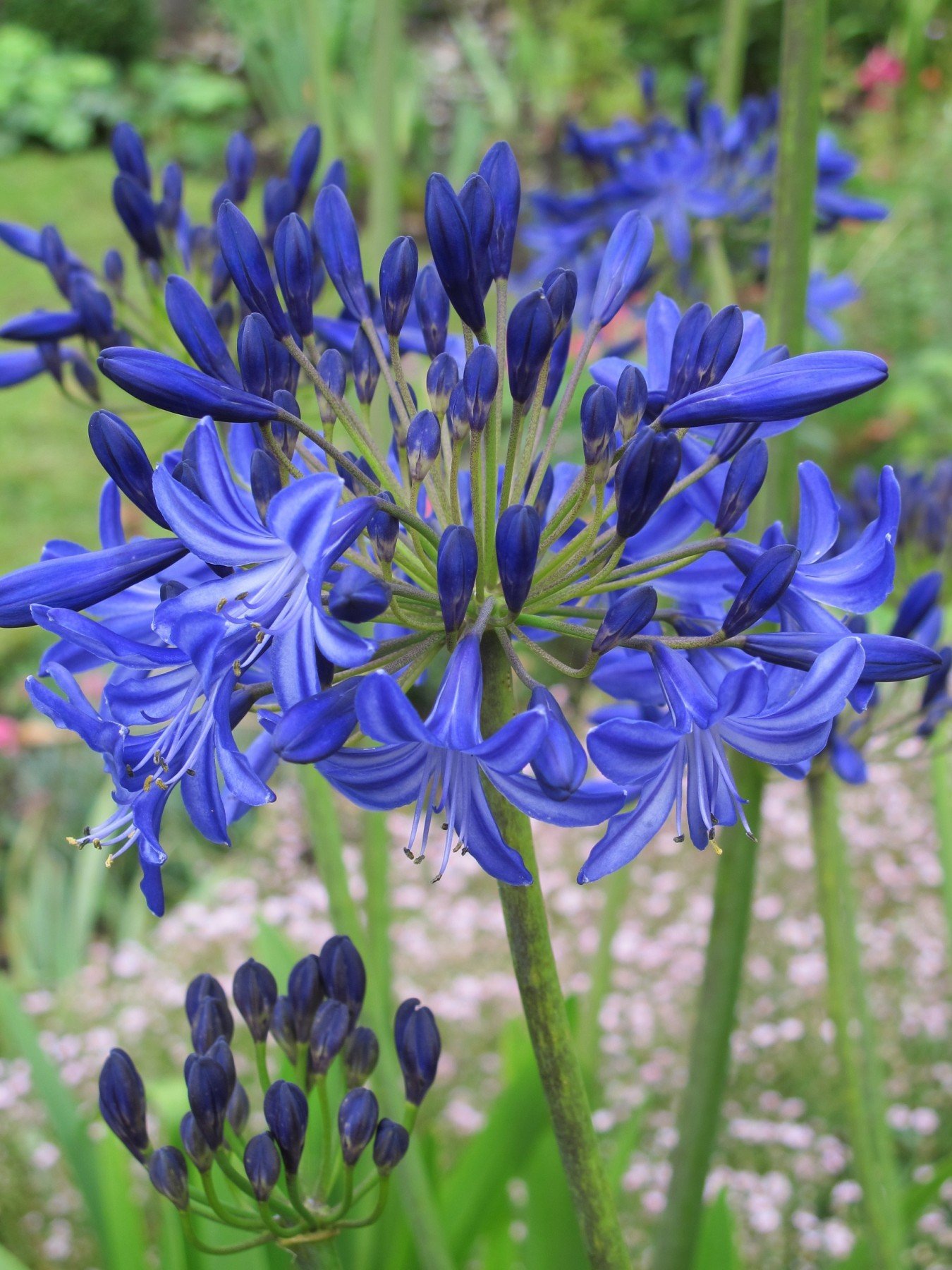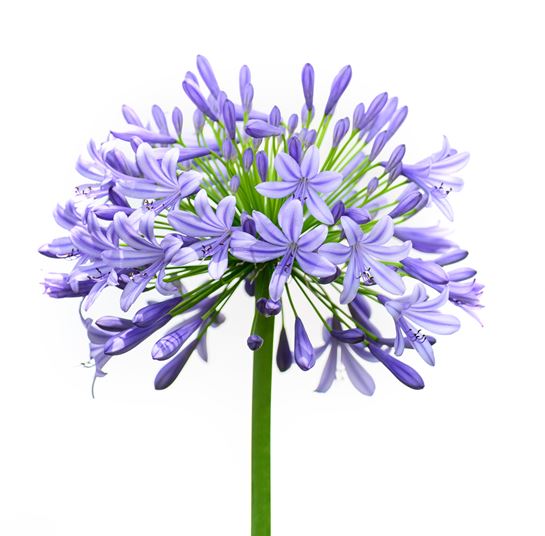Agapanthus Treatment Tips for Lush and Vibrant Flowers
Agapanthus Treatment Tips for Lush and Vibrant Flowers
Blog Article
Grasping the Art of Agapanthus Treatment: Important Actions for Healthy And Balanced Development and Vibrant Flowers
In the world of cultivation, the growing of agapanthus stands as a fulfilling endeavor for those that look for to support these elegant blooming plants. From choosing the right selection to understanding trimming methods, the journey in the direction of cultivating flourishing agapanthus plants is diverse and holds the key to opening the complete possibility of these agricultural treasures.

Picking the Right Agapanthus Selection

When picking the appropriate Agapanthus selection for your garden, consider aspects such as climate suitability, blossom color, and growth habit. Agapanthus, commonly called Lily of the Nile or African lily, comes in a range of colors ranging from shades of blue and purple to white. Select a flower shade that enhances your existing yard palette to produce a harmonious landscape. In addition, think about the environment in your area to ensure the Agapanthus variety you choose can thrive in your details problems. Some varieties are extra forgiving of chilly temperature levels, while others favor warmer environments. Understanding the development routine of different Agapanthus ranges is critical for appropriate placement within your yard. Some selections have a clumping development routine, perfect for containers or boundaries, while others have a more dispersing nature, appropriate for ground cover or mass growings. By very carefully examining these elements, you can pick the ideal Agapanthus variety to boost the charm of your yard.
Suitable Growing Problems
Taking into consideration the optimum environmental demands is essential for effective Agapanthus farming. Agapanthus grows in well-draining dirt with a somewhat acidic to neutral pH degree. When growing, select a location that gets full sunshine to partial color. In hotter climates, offering some mid-day shade can avoid scorching of the leaves. Agapanthus plants are sensitive to cold temperature levels and need to be secured from frost throughout winter season.
To guarantee healthy and balanced growth and vibrant flowers, plant Agapanthus light bulbs at a deepness of concerning 2-4 inches and area them 8-12 inches apart. Adding organic matter, such as compost, to the dirt can enhance water drainage and fertility, advertising robust origin advancement. Mulching around the base of the plants aids preserve wetness and subdues weed growth. Normal watering is important, specifically throughout the growing period, to keep the soil regularly moist but not saturated.
Watering and Feeding Tips
Keeping proper moisture degrees and offering crucial nutrients are crucial elements in the care routine for Agapanthus plants. When it comes to sprinkling Agapanthus, it is vital to strike a balance. If overwatered, these plants prefer constantly wet soil yet are susceptible to root rot. During the growing period, water deeply once a week, ensuring the soil is well-draining to avoid waterlogging. In hotter environments or throughout durations of drought, more constant watering may be required to maintain the dirt uniformly wet. However, reduce watering in the winter to stop water logged problems.
Feeding Agapanthus is necessary for advertising healthy growth and prolific blooms. Use a balanced fertilizer, such as a 10-10-10 formula, in the very early spring as brand-new growth arises. By following these watering and feeding suggestions, you can guarantee your Agapanthus plants grow and create vibrant, long-lasting blossoms.
Pruning Strategies for Agapanthus
Pruning Agapanthus plants at the ideal times and with correct methods is crucial for maintaining their health and wellness and advertising optimal growth and flowering. The perfect time to trim Agapanthus is in late winter months or early spring before brand-new growth arises. Begin by getting rid of any kind of dead or yellowing leaves near the base of the plant. Cut them as short as possible without damaging the arising shoots.
Deadheading invested blossoms can likewise reroute the plant's power into creating even more blooms rather than setting seeds. If you want to collect seeds for propagation, leave some blossoms to completely dry and fully grown on the plant.
Bear in mind to utilize tidy, sharp devices to make specific cuts and decrease the threat of presenting illness. Agapanthus. Regular pruning will certainly assist maintain your Agapanthus looking healthy and cool while making certain an abundant screen of beautiful flowers
Handling Common Pests and Illness
After making sure appropriate trimming techniques for Agapanthus, it is vital to attend to usual insects and illness that can influence the wellness and vitality of these plants. Agapanthus have a peek at these guys plants are normally sturdy yet can still drop target to certain problems. One usual pest that impacts Agapanthus is the Agapanthus gall midge. This small, orange fly lays its eggs in the vegetation, bring about altered growth and blossom buds that fail to open. To fight this insect, prune and damage any type of damaged plant components and consider utilizing insecticidal soap.
In addition, Agapanthus plants can suffer from root rot if they are planted in badly draining pipes dirt. By being alert and taking prompt action versus bugs and illness, you can aid your Agapanthus plants thrive and create vivid blossoms. Agapanthus.

Final Thought
To conclude, grasping the art of agapanthus care involves selecting the ideal variety, providing excellent planting conditions, correct watering and fertilizing, ideal pruning techniques, and addressing typical insects and conditions. By complying with these crucial actions, you can guarantee you could try these out healthy and balanced development and vibrant blossoms for your agapanthus plants. Remember to on a regular basis monitor and keep your plants to advertise their general health and longevity.
To make certain healthy growth and dynamic blossoms, plant Agapanthus bulbs at a depth of about 2-4 inches and space them 8-12 inches apart. By complying with these watering and fertilizing suggestions, you can ensure your Agapanthus plants flourish and create vivid, durable blossoms.
One usual pest that affects Agapanthus is the Agapanthus gall midget. Additionally, Agapanthus plants can Resources endure from root rot if they are grown in badly draining soil. By complying with these vital actions, you can ensure healthy and balanced growth and dynamic blossoms for your agapanthus plants.
Report this page